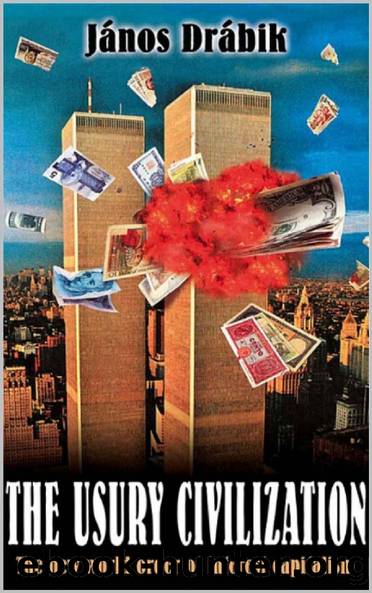The Usury Civilization: The new world order of interest capitalism by dr. Janos DRABIK

Author:dr. Janos DRABIK [DRABIK, dr. Janos]
Language: eng
Format: epub
Publisher: Gold Book
Published: 2017-03-06T18:30:00+00:00
The mutilation of Germany
In the 1890-es, on the maps drawn in the closed societies mentioned by Rudolf Steiner, Germany was already dismembered in such a way that, for instance, in those plans which where made at the end of World War II, primarily the Henry Morgenthau and the Theodore N. Kaufman plans. This fact reveals again that one of the most important goals of the background power, with the starting of World War I, was to weaken Germany and put her under control.
The first German territory which fell victim to the vivisection in Versailles was, of course, Alsace and Lorraine, this land inhabited by Germans for one thousand years, which was annexed gradually by France in the 17th century. Nevertheless, most of the inhabitants were Germans, and even in our days this region is mostly inhabited by assimilated Germans who became or were forced to become French. When, in 1870, Napoleon III waged war against Prussia to hinder the accomplishment of the German unity, France lost the war and Alsace and Lorraine became part of the German Empire established in 1871.
Following the armistice signed on 11th November 1918, Clemenceau and Poincaré marched into Strassburg surrounded by the acclamations of joy of the crowd. But, in Alsace, this festivity had to be postponed unexpectedly, because Clemenceau and Poincaré were preceded by other âliberatorsâ who arrived from Kiel and Hamburg. They were those rebel sailors transported there on special trains from the North German ports, who wanted to achieve a Bolshevik revolution, following the pattern supplied by Karl Liebknecht, Rosa Luxemburg and Kurt Eisner. These sailors were not waving a French flag, but a red flag.
The initial plan was that the inhabitants of Alsace and Lorraine could decide about the status of their native land in the framework of a free referendum. Tardieu himself wrote in his book titled âLa Paixâ (The Peace) that in May 1917 even the Americans regarded Alsace and Lorraine as a German-speaking region, and this was decisive for them.
The Americans expressed their hope that France would be satisfied with an independent and neutral Alsace and Lorraine. Tardieu goes on: âI remember a long discussion I had in August, 1917, with Mr. Walter Lippmann, a member of the Inquiry Office, the official bureau established for the advance study of peace questions: the idea of a plebiscite was so deeply rooted in his mind â the idea of Alsace and Lorraine forming an integral part of France was so perfectly foreign to him â that he had concocted a system of voting by fragments under which the two provinces would be divided into a dozen sections.â
Download
This site does not store any files on its server. We only index and link to content provided by other sites. Please contact the content providers to delete copyright contents if any and email us, we'll remove relevant links or contents immediately.
Bad Blood by John Carreyrou(6558)
Rich Dad Poor Dad by Robert T. Kiyosaki(6414)
Principles: Life and Work by Ray Dalio(6227)
Playing to Win_ How Strategy Really Works by A.G. Lafley & Roger L. Martin(5939)
Management Strategies for the Cloud Revolution: How Cloud Computing Is Transforming Business and Why You Can't Afford to Be Left Behind by Charles Babcock(4528)
The Confidence Code by Katty Kay(4190)
Thinking in Bets by Annie Duke(4154)
American Kingpin by Nick Bilton(3760)
Delivering Happiness by Tony Hsieh(3369)
Project Animal Farm: An Accidental Journey into the Secret World of Farming and the Truth About Our Food by Sonia Faruqi(3178)
The Power of Habit by Charles Duhigg(3063)
The Tyranny of Metrics by Jerry Z. Muller(3005)
Brotopia by Emily Chang(3002)
Mastering Bitcoin: Programming the Open Blockchain by Andreas M. Antonopoulos(2983)
The Marketing Plan Handbook: Develop Big-Picture Marketing Plans for Pennies on the Dollar by Robert W. Bly(2978)
I Live in the Future & Here's How It Works by Nick Bilton(2940)
The Content Trap by Bharat Anand(2864)
Building a StoryBrand by Donald Miller(2843)
Applied Empathy by Michael Ventura(2839)
